
Build nest tubes to boost mallard numbers, says BASC
Citizen science will aid understanding of mallard nesting habitat preference in bid to boost numbers.
Get information on the legal shooting season for mammals and birds in the UK.
Apply for funding for your project or make a donation today
Comprehensive information and advice from our specialist firearms team.
Everything you need to know about shotgun, rifle and airgun ammunition.
Find our up-to-date information, advice and links to government resources.
Everything you need to know on firearms law and licensing.
All the latest news and advice on general licences and how they affect you.
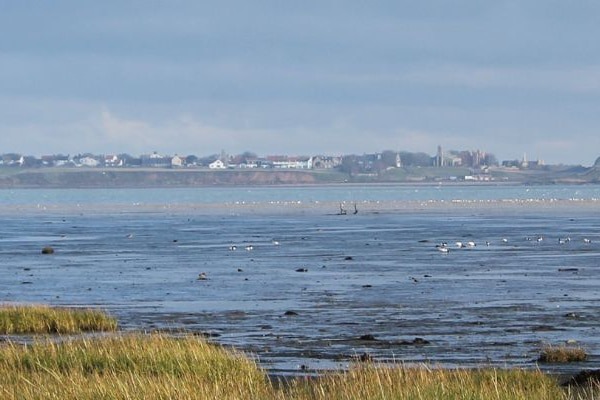

BASC member Tim Webster secured a dream trip to go wildfowling at Lindisfarne, after bidding for the prize in BASC’s annual Lindisfarne auction.
Having lived in the Scottish Borders all my life, I have heard stories from family friends who used to wildfowl at Lindisfarne in their younger years. As a self-confessed countryside addict, it has always been on my bucket list.
My lack of experience always put me off organising a trip by myself, along with the fact that September for me comes in the middle of harvest before I migrate back to university.
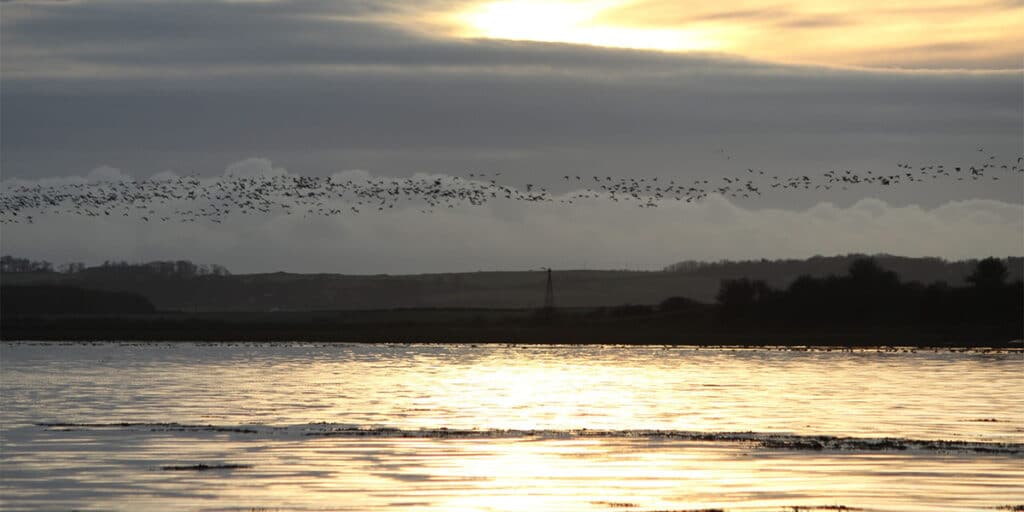
Going wildfowling at Lindisfarne was an experience like no other. I headed there with preconceptions of carrying out big bags full of hide-building equipment were quickly dismissed, and the reason for bringing my father’s chest waders, once used for fishing the Tweed, was brought to light.
The knowledge and excitement shown by the guides were tangible from the moment we met. We arrived in Lowick at around 3pm, which gave us plenty of time to kit up.
The waders – a new form of shooting attire for me that I had never even worn before, let alone shot in – were hastily pulled on in eager anticipation of the evening flight.
We loaded up the cars and headed to the causeway for a look with the binoculars. The first thing I noticed was the sheer abundance of life; species I hadn’t seen before but that the guides could confidently identify from miles away. It was extraordinary.
We decided to split into two groups and flipped a coin to settle on who went where. Gun and stick in hand, I followed on, heading north of the causeway.
Senses now fully heightened, I nestled into a gully as we waited, watching wigeon flying across the horizon. I remember looking at the sunset, realising that the wildfowl aren’t the only thing these countrymen come out for. Sitting out in the mud, just like sitting in woodland, you can learn so much by just watching and listening. That’s something you can’t gain without being out there.
That evening we shot three wigeon, a new species for me, which is always an important note for the game book. The style of shooting is nothing like I have experienced before. Trying to shoot lying down or kneeling while stuck in the mud was very new. I think the guides will admit it’s a technique that I need to work on!
As the last hint of light finally faded from the sky, we made our way back to the cars for our well-earned supper.
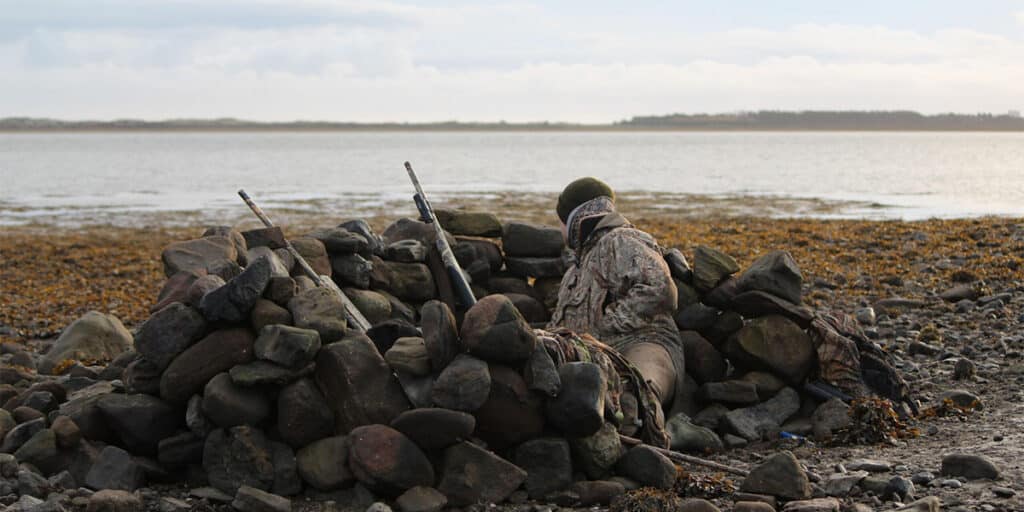
The next morning, we left the B&B nice and early. Back on with the muddy waders and we made tracks.
As a keen pigeon shooter, the idea of a hide to me was always poles, nets and as much foliage as possible. The “lay on your back or front, or any way that you can shoot in the grass” style of hide was a very strange concept.
Listening to teal whistle just metres overhead, all I could think was: how on earth will I have the time to sit up, mount the gun and pull the trigger before the ducks, which fly like spitfires, have turned a wing and are out of range?
Despite drawing a blank that morning, I will always remember the one teal that flew so close to me I could see every colour on every feather, and in the blink of an eye, it was gone.
The following day brought wind and rain. And not English rain, Scottish wind and rain.
The thought of a duck was few and far between, in fact, that morning the gun was not from the slip for very long. Blowing 50 miles an hour, with sidewards rain, it was wild.
Although there were no ducks, it was amazing to be out, to see the power in the waves battering the coastline. Luckily, I stayed relatively dry in comparison to some who looked as wet as an otter’s pocket by the time we got back to the hotel.
It was safe to say that the breakfast was very appreciated that morning and copious quantities of tea and coffee were consumed in an attempt to warm up.
The weather stayed ferocious all day, so we had a quiet morning and returned to the mud for an afternoon tide flight. Lots of wigeon were moving but they evaded us again.
The wind kept the duck moving low, and another wildfowler who was knocking down the wigeon further up the shore kept pushing ducks off their flight line. This was probably a good thing because he was clearly an accomplished wildfowler and a very impressive shot!
Overall, wildfowling at Lindisfarne was a fantastic experience and one that will be remembered for years to come. I think wildfowling takes field sports back to what they once were. Skills passed down through generations, learning to outwit your quarry, not necessarily in great numbers, and that each one is memorable.
It was the act of shooting enough to take home and have for supper, but with the added realisation that you may only get one shot, so you’d best make it count.
Safe to say, I will definitely be going out wildfowling again soon.
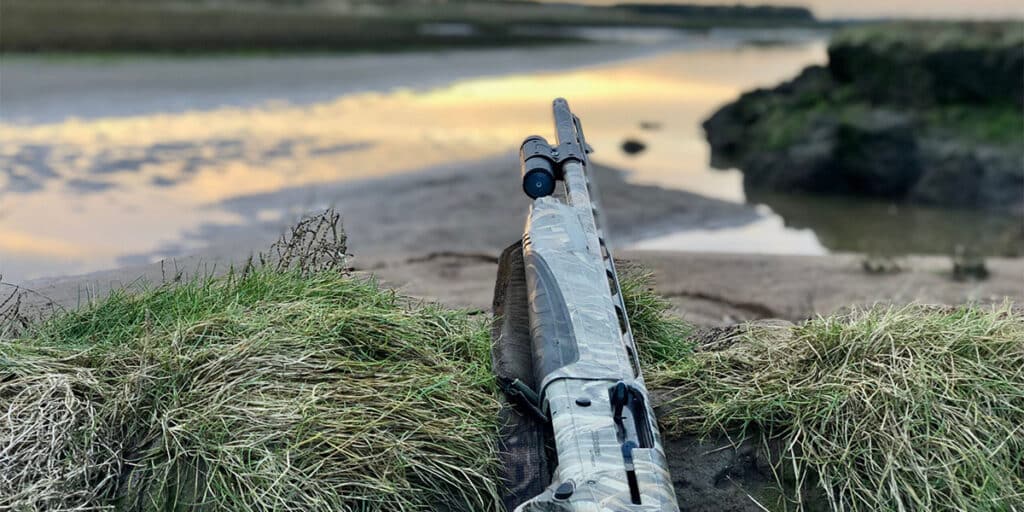
Bid now for three days’ guided wildfowling at Lindisfarne with food and accommodation for two Guns. All proceeds will go to support BASC’s Young Shots wildfowling events.
BASC wildfowl and wetlands department, Newcastle Wildfowler’s Association and the legendary Sir Johnny Scott are offering a lucky bidder and their friend the chance to experience a fully guided wildfowling trip on this iconic, Purdey award-winning part of Northumberland’s coastline.
Don’t miss your chance for a wildfowling experience of a lifetime. In recent years, bird counts in this area have ranged from up to 13,000 pink-footed geese and up to 23,000 wigeon.
The lot includes:
The dates are 23–26 October 2023 which are fixed due to the tidal requirements to make the most of this fantastic opportunity.
Auction estimate: £2,500 – £3,500
The sealed bid auction closes at noon on 31 August 2023
Every season, Natural England makes 200 wildfowling permits available at this iconic National Nature Reserve of Lindisfarne Northumberland.
Recent bird counts have recorded up to 13,000 pink-footed geese and 23,000 wigeon.
For any specific queries regarding the scheme, please contact BASC wildfowling advisor Chris Wright on 07815 468 471 or email here.
For more information regarding the Lindisfarne Wildfowling Permit Scheme, please click here, or email the wildfowl and wetlands department.
Have you heard about BASC’s Wildfowling Permit Scheme?
The scheme offers experienced and novice wildfowlers, as well as anyone who would like to experience the sport for the first time, opportunities to go wildfowling at a number of locations across the UK.
Details of the Wildfowling Permit Scheme 2023/24 are now available to download. You can also request a hard copy from the BASC wildfowl and wetlands team here.


Citizen science will aid understanding of mallard nesting habitat preference in bid to boost numbers.
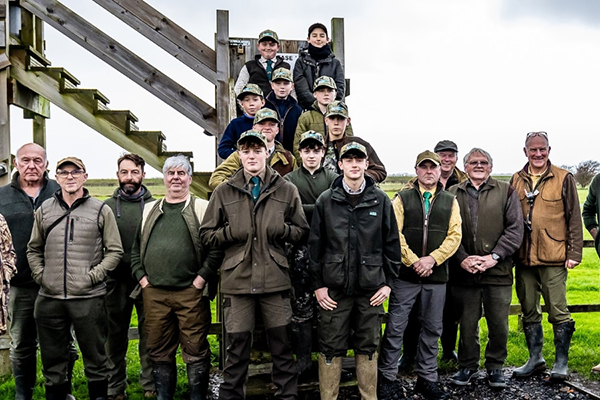
Ten keen young shooters took part in an introduction to wildfowling day hosted recently by Preston and District Wildfowlers and supported by BASC.

Understanding the established global routes followed by migratory birds is key to ensuring the future of sustainable wildfowling.
Sign up to our weekly newsletter and get all the latest updates straight to your inbox.
© 2025 British Association for Shooting and Conservation. Registered Office: Marford Mill, Rossett, Wrexham, LL12 0HL – Registered Society No: 28488R. BASC is a trading name of the British Association for Shooting and Conservation Limited which is authorised and regulated by the Financial Conduct Authority (FCA) under firm reference number 311937.
BASC Direct Ltd is an Introducer Appointed Representative of Agria Pet Insurance Ltd who administer the insurance and is authorised and regulated by the Financial Conduct Authority, Financial Services Register Number 496160. Agria Pet Insurance is registered and incorporated in England and Wales with registered number 04258783. Registered office: First Floor, Blue Leanie, Walton Street, Aylesbury, Buckinghamshire, HP21 7QW. Agria insurance policies are underwritten by Agria Försäkring.
If you have any questions or complaints about your BASC membership insurance cover, please email us. More information about resolving complaints can be found on the FCA website or on the EU ODR platform.